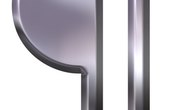A technical description paper defines and explains a particular product or process by creating a clear picture of it, using words and visuals. Typical subjects for a technical description paper include the structure of an automobile or the process of nuclear fusion. You can find technical descriptions in textbooks, instruction or installation manuals or documents that relay information for proper use, repair or understanding of an object or concept.
Creating a Technical Description
Determine the profile of your technical description paper's audience, as this largely influences your choice of vocabulary. For example, a technical description in an advanced engineering textbook should use highly technical terms since readers are in their third or fourth year of college or in an apprenticeship. A brief description of the purpose and function of a circuit breaker for a homeowner — in case of a surge — should use familiar terms and easy-to-understand visuals.
Assess the needs of your audience. Ask yourself what your reader want to get out of this document. A technical description in an instruction manual only needs to include information useful to a person trying to repair something. A description in a textbook should provide a comprehensive overview of all aspects of a process.
Organizing a Technical Description
Create an organizational scheme for your technical description paper. A “spatial” sequence aids in describing how an object looks, a “functional” sequence explains how something works and a “chronological” sequence helps when writing steps in a process. Create a title for your description paper and subheadings for all sections.
Fill in the section under each subheading with the appropriate information in full sentences. Write sentences clearly and to the point; technical communication should not contain flowery or creative prose. Begin new paragraphs whenever you broach a new idea. You can use short paragraphs of only one or two sentences in technical writing.
Adding Visuals to a Technical Descriptions
Decide on visuals to include in your technical description. As the cliché goes, a picture says a thousand words; sometimes, a picture suffices where words do not. Additionally, some people are visual learners and a picture clarifies the concepts the words in a description should convey.
Tip
Etymology, the history of a word’s origin, can sometimes help readers understand a technical concept. Consider also if the history or background of a procedure would aid in explaining its usefulness.
A technical description does not require a thesis or lede; its purpose is only to impart information as quickly and efficiently as possible.
Related Articles
References
Tips
- Etymology, the history of a word’s origin, can sometimes help readers understand a technical concept. Consider also if the history or background of a procedure would aid in explaining its usefulness.
- A technical description does not require a thesis or lede; its purpose is only to impart information as quickly and efficiently as possible.
Writer Bio
Nadine Smith has been writing since 2010. She teaches college writing and ESL courses and has several years experience tutoring all ages in English, ESL and literature. Nadine holds a Master of Arts in English language and literature from McMaster University in Ontario, Canada, where she led seminars as a teaching assistant.










